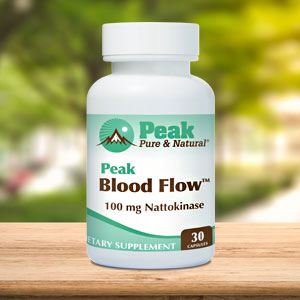Get Easy Health Digest™ in your inbox and don’t miss a thing when you subscribe today. Plus, get the free bonus report, Mother Nature’s Tips, Tricks and Remedies for Cholesterol, Blood Pressure & Blood Sugar as my way of saying welcome to the community!
More than 100 health conditions increase with height

Being short has never bothered me, although coming in at just five feet has made life a bit inconvenient.
I can’t tell you how much I appreciate the kind strangers at the supermarket willing to retrieve something off the top shelf for me!
Grocery shelves, kitchen cabinets and things of that sort were clearly not built with short people in mind.
But some interesting research has come to light that seems to imply that being tall is not all it’s cracked up to be…
Being tall was already a risk factor for some conditions
Researchers have examined the possibility that height is an unrecognized risk factor for some common health conditions in adults.
They used a genetic and health database called the VA Million Veteran Program, which includes data from approximately 280,000 Americans.
Previous research has already confirmed an association between being tall and risks for certain conditions, including atrial fibrillation (irregular heartbeat) and varicose veins. But the present study identified between 100 to110 other health conditions that are linked to being tall.
More problems associated with height
One of the health conditions the study linked to being tall is peripheral neuropathy (PN), a painful condition involving damage to nerves in the hands, feet and arms. PN is also associated with diabetes.
Other conditions that the study linked to height include blood clots, deep vein thrombosis (DVT), bone infection, brain cell damage, leg and foot ulcers and toe deformity, dizziness and lightheadedness, inflammation and leg pain.
While the research did not look at why tall people suffer more health issues, there are several plausible theories…
One is that, in a tall person, blood must be pumped a longer distance, which may cause reduced flow. And of course, proper blood flow is essential for keeping the body and its tissues healthy.
Another theory is that carrying more body mass may put additional pressure on bones, muscles and feet, making a tall person more prone to problems involving these parts of the body.
Oddly enough, though, the research also showed that tall people (defined here as being over 5’9” tall) seem to be at lower risk of coronary heart disease, high blood pressure and high cholesterol. So it’s not all bad news.
What this could mean for you if you’re a tall person
Obviously, there’s nothing you can do about being tall (this is known as a non-modifiable risk factor).
But the research presented here could hold implications for how you monitor your health.
Just as there are other non-modifiable risk factors for various diseases, including family history, being taller than 5’9” may be a good reason to pay special attention to symptoms that are easily dismissed — like tingling or numbness in your hands and feet that can signal peripheral neuropathy.
Based on this research, it sounds like a good idea to focus on improving circulation to avoid the threat of DVT, problems in the hands, feet and legs and to help oxygen-rich blood bathe your brain cells, too. Try to:
- Stand, stretch and bend your toes frequently.
- Walk around every hour or so, if possible, especially if you sit a lot. Walk for at least a half-hour once a day around your neighborhood or track.
- If walking is not an option, then stretch or bounce your legs, wiggle and flex your toes, and roll your ankles backward and forward.
- Keep your weight under control.
- Drink plenty of fluids to prevent dehydration that causes blood vessels to become narrow and blood to thicken.
The right foods can help too. Dietary nitrates, found in a few special foods like beets, are converted within your body to nitric oxide, a compound that helps blood vessels dilate so more oxygen-rich blood can flow through your body.
Natto, a Japanese dish made with fermented soybeans, was found to contain a naturally occurring enzyme, called nattokinase, that inhibits fibrin, a fibrous mesh found inside blood vessels that can impede blood flow and make blood flow sluggish.
Despite this research, I’m still a little jealous of my tall friends. And when you put all of this into perspective, we all have risks and health issues that more movement and better circulation could certainly improve.
Editor’s note: Are you feeling unusually tired? You may think this is normal aging, but the problem could be your master hormone. When it’s not working, your risk of age-related diseases skyrockets. To reset what many call “the trigger for all disease” and live better, longer, click here to discover The Insulin Factor: How to Repair Your Body’s Master Controller and Conquer Chronic Disease!
Sources:
Taller than 5ft9? You may be at greater risk of more than 100 health problems, biggest study of its kind finds Daily Mail (U.K.)
A multi-population phenome-wide association study of genetically-predicted height in the Million Veteran Program PLOS Genetics
Shorter People May Duck Risk of Varicose Veins Web MD
The height as an independent risk factor of atrial fibrillation: A review Science Direct













